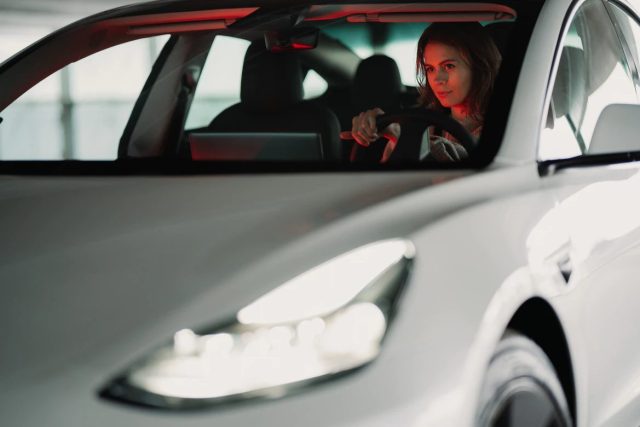Car accidents, unfortunately, happen all the time, even when on the clock and driving the company car.
Although most personal auto insurance plans include the car owner and anybody else who is permitted to drive the vehicle, many business auto insurance policies will need greater detail about who is covered as a driver.
That’s why it’s critical to double-check that your business insurance covers all the ways your workers may use cars to accomplish their duties. Below we will explain what business auto insurance covers and if it covers your employee’s car accident.
What exactly is a business automobile policy?
A business automobile insurance (BAP) covers a company’s usage of automobiles, trucks, vans, and other vehicles to conduct business. A business auto policy is often referred to as a business auto coverage form (BACF).
Cars owned or leased by the firm, rented by the company, or employee-owned vehicles used for business reasons may be covered. A BAP protects you against both liability and damage.
How does a business automobile policy work?
Any company-owned car that travels on public roads is covered under a business automobile policy. BAP coverage is selected for each insured vehicle on an individual basis. Various vehicles owned by the same company may have different levels and types of coverage for each car.
Even if they don’t own automobiles, companies must still get business automobile coverage in case they need to use personal cars for commercial reasons at any point.
This protection is essential for employees who use their own vehicles to perform business. If a serious accident occurs, their liability coverage may not be enough to safeguard the company effectively.
Insurers will construct the policy for the company owner using the business auto coverage form. A business coverage policy will specify the amount and kind of vehicles protected, the causes and types of damage that are covered, and the insurance company’s and the company’s overall responsibilities.
BAPs protect any injury problems or damage to property incurred in a car accident and any related costs with service or repair. Workers should avoid relying on personal vehicle insurance since it generally doesn’t cover any losses incurred while on the job.
Both property damage and liability insurance should be included in a BAP policy. In addition, specified coverage levels may be required when the vehicle is leased or the firm makes monthly payments. The coverages available with a BAP are:
- Collision coverage: This is only available when combined with liability and comprehensive coverage. This clause compensates the insured for damage to the vehicle caused by the insured’s business driver’s negligence. It excludes damage caused by theft or vandalism and damage reimbursed by another at-fault driver’s coverage.
- Comprehensive coverage: Comprehensive covers damage to the automobile caused by events other than a collision. Forces of nature, like a tornado, dents from a run-in with a deer, destruction of property and burglary damage, and other reasons may all contribute to the loss.
- Liability coverage: It protects you from lawsuits stemming from personal injury and property damage. Liability insurance is required by law in most states. Since liability insurance has no deductible, a motorist can pick from a variety of deductibles depending on the risk threshold.
A court may impose penalties if a motorist is found guilty of reckless driving or driving while intoxicated. A common financial mistake business owners make is only having liability coverage because, in some areas, a BAP doesn’t cover civil penalties. This can leave owners facing tough financial decisions.
- Specified perils coverage: This protects your property against losses caused by dangers or occurrences listed in the contract. The insured has the burden of proof, which requires them to show that a claim is true through facts and data.
Additionally, policyholders should pay close attention to the number symbols provided in the policy declarations. They identify the types of vehicles covered by each policy.
The digits 1 through 9 plus 19 are included in these symbols, which are known as covered auto designation symbols. Each symbol denotes a different type of vehicle that is covered. For example, symbol 1 denotes “any automobile,” but sign 2 denotes “owned automobiles exclusively.”
What happens when employees use their personal vehicles for your business?

No matter how often your workers use their cars while working for you, non-owned auto coverage, which is part of hired and non-owned auto coverage, is a must-have for your business.
This type of endorsement provides additional coverage over and above what your workers’ own vehicle policy may give.
Assume you run a bakery business and periodically require your staff to make deliveries to clients in their own automobiles. If your BAP coverage doesn’t extend to employees, their insurance may not cover the accident since they were making a business delivery.
For a startup food company, this mishap can set you back financially and make it difficult for you to venture into new e-commerce business ideas that are crucial to your business growth.
If your workers use their own automobiles to conduct work for your company, they should make sure that their personal auto plans include liability coverage. This insurance will, in most circumstances, be the primary coverage if they cause an accident. Any gaps in coverage would be filled by your business auto liability.
Make Certain You Have the Right Insurance Coverage
You can’t just assume that your staff has enough personal auto insurance. Make sure they’re insured by their own insurance coverage if they’re driving for your company. Your workers’ personal insurance may also act as the primary insurer in the event of an accident that necessitates collision coverage, in addition to liability coverage.
However, you, as their employer, may be held responsible if an employee causes an accident that results in injury or property damage. The advantage of non-owned auto is that it may usually be used by anyone who drives a car for your company.
 Imani Francies writes and researches for the auto insurance comparison site, AutoInsurance.org. She enjoys helping business owners find the best coverage for their operations.
Imani Francies writes and researches for the auto insurance comparison site, AutoInsurance.org. She enjoys helping business owners find the best coverage for their operations.







